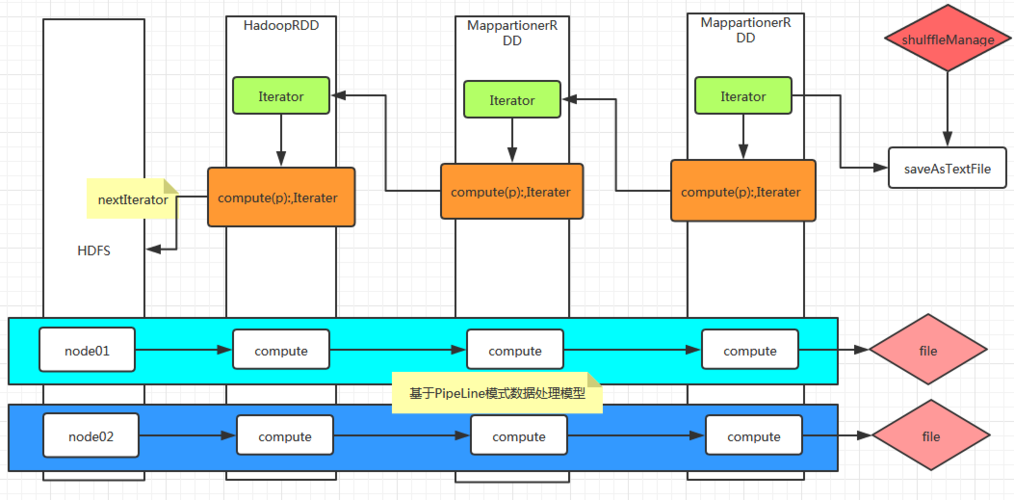spark大数据分析语言是什么
Title: Understanding the Architecture of Spark for Big Data Processing
In the realm of big data processing, Apache Spark has emerged as a leading framework due to its versatility, scalability, and efficiency. Spark's architecture plays a crucial role in enabling it to handle vast amounts of data across various use cases. Let's delve into the architecture of Spark to understand how it operates and how organizations can leverage it effectively.
1. Overview of Spark:
Apache Spark is an opensource, distributed computing system that provides an interface for programming entire clusters with implicit data parallelism and fault tolerance. Its architecture is designed to efficiently execute various workloads, including batch processing, realtime streaming, machine learning, and interactive queries.
2. Components of Spark Architecture:
2.1. Spark Core:
At the heart of Spark lies its core engine, responsible for task scheduling, memory management, fault recovery, and interaction with storage systems. It provides APIs in Scala, Java, Python, and R for building distributed applications.
2.2. Spark SQL:
Spark SQL module enables the integration of relational processing with Spark's functional programming API. It supports querying structured and semistructured data through SQL and DataFrame APIs.
2.3. Spark Streaming:
Spark Streaming extends Spark Core to support realtime processing of streaming data. It ingests data from various sources like Kafka, Flume, and performs parallel processing using microbatching or continuous processing techniques.
2.4. Spark MLlib:
MLlib is Spark's scalable machine learning library, offering a rich set of algorithms and tools for building ML pipelines. It leverages Spark's distributed processing capabilities to train models on large datasets efficiently.
2.5. Spark GraphX:
GraphX is a graph processing library built on top of Spark, enabling graph analytics and computation. It provides an API for expressing graph computation workflows and executing them in a distributed manner.
2.6. SparkR and Sparklyr:
SparkR and Sparklyr are R interfaces for Spark, allowing R users to leverage Spark's capabilities directly from their familiar R environment.
3. Spark Architecture Layers:
3.1. Cluster Manager:
Spark can run on various cluster managers like Apache Mesos, Hadoop YARN, or Spark's standalone cluster manager. The cluster manager allocates resources and schedules tasks across the cluster.
3.2. Worker Nodes:
Worker nodes are the compute nodes in the Spark cluster where actual data processing occurs. They execute tasks assigned by the cluster manager and store data in memory or disk as required.
3.3. Executors:
Executors are processes launched on worker nodes responsible for executing tasks and storing data in memory or on disk. Each executor is allocated a certain amount of memory and CPU cores.
3.4. Driver Program:
The driver program is the main process responsible for orchestrating the execution of Spark jobs. It communicates with the cluster manager to allocate resources, sends tasks to executors, and monitors job progress.

4. Data Processing Workflow:
4.1. Data Ingestion:
Data ingestion involves bringing data into the Spark ecosystem from various sources like files, databases, or streaming sources.
4.2. Transformation and Processing:
Once the data is ingested, Spark performs transformations and processing operations like filtering, aggregating, joining, and applying machine learning algorithms.
4.3. Action and Output:
Finally, Spark triggers actions like writing results to storage, displaying output, or triggering further downstream processing.
5. Best Practices and Considerations:
Optimized Resource Allocation:
Properly configure cluster resources based on workload requirements to ensure optimal performance.
Data Partitioning:
Utilize data partitioning techniques to distribute data evenly across executors and minimize shuffle operations.
Fault Tolerance:
Leverage Spark's builtin fault tolerance mechanisms like lineage tracking and data replication to ensure reliable job execution.
Memory Management:
Tune memory settings to balance between computation and data storage requirements, avoiding outofmemory errors.
Monitoring and Optimization:
Regularly monitor job performance, identify bottlenecks, and optimize Spark configurations accordingly.Conclusion:
Apache Spark's architecture provides a robust foundation for processing big data workloads efficiently. By understanding its components, layers, and workflow, organizations can harness the power of Spark to derive valuable insights from their data at scale. Embracing best practices and considerations ensures smooth operation and maximizes the benefits of Spark in realworld deployments.
This architecture overview serves as a guide for both beginners and experienced practitioners looking to leverage Spark effectively in their big data projects.
Hope this helps!
标签: spark大数据技术 spark大数据平台的基本构架 spark大数据分析技术
相关文章
-
景顺成长,探索中国城市化进程中的绿色发展之路详细阅读

在21世纪的今天,城市化已成为全球范围内不可逆转的趋势,中国,作为世界上人口最多的国家,其城市化进程尤为引人注目,随着经济的快速发展,城市化带来的问题...
2025-10-01 199
-
深度解析,股票000777中核科技的投资价值与未来展望详细阅读

在当今的投资市场中,股票投资无疑是一个热门话题,而在众多股票中,股票代码为000777的中核科技因其独特的行业地位和发展潜力,吸引了众多投资者的目光,...
2025-09-30 241
-
深圳证券交易所交易规则,投资市场的指南针详细阅读

亲爱的读者,想象一下,你正站在一个繁忙的十字路口,四周是熙熙攘攘的人群和川流不息的车辆,每个人都在按照交通规则行事,红灯停,绿灯行,黄灯亮起时,大家会...
2025-09-30 201
-
基金202005,揭秘投资背后的逻辑与策略详细阅读

在投资的世界里,基金是一种备受瞩目的投资工具,它以其多样化的投资组合、专业的管理团队和相对稳定的收益吸引了众多投资者的目光,我们将深入探讨基金2020...
2025-09-30 194
-
探索中国平安行销,策略、实践与未来趋势详细阅读

在当今竞争激烈的市场环境中,行销策略对于企业的成功至关重要,中国平安,作为中国领先的金融服务集团,其行销策略不仅在国内市场上取得了显著成效,也为全球行...
2025-09-29 201
-
深入解析数码视讯股票,投资价值与市场前景详细阅读

在当今数字化时代,数码视讯行业作为信息技术领域的重要组成部分,正逐渐成为投资者关注的焦点,本文将深入探讨数码视讯股票的投资价值与市场前景,帮助投资者更...
2025-09-29 244
-
悦康药业,创新与责任并重,引领健康未来详细阅读

在当今这个快节奏、高压力的社会中,健康成为了人们越来越关注的话题,而在医药行业中,有这样一家企业,它以创新为驱动,以责任为担当,致力于提供高质量的药品...
2025-09-29 192
-
深度解析,定向增发股票背后的资本游戏与投资策略详细阅读

在资本市场的棋盘上,股票的每一次变动都牵动着投资者的神经,定向增发作为一种特殊的融资方式,因其能够为上市公司带来资金的同时,也为投资者提供了新的投资机...
2025-09-29 196
